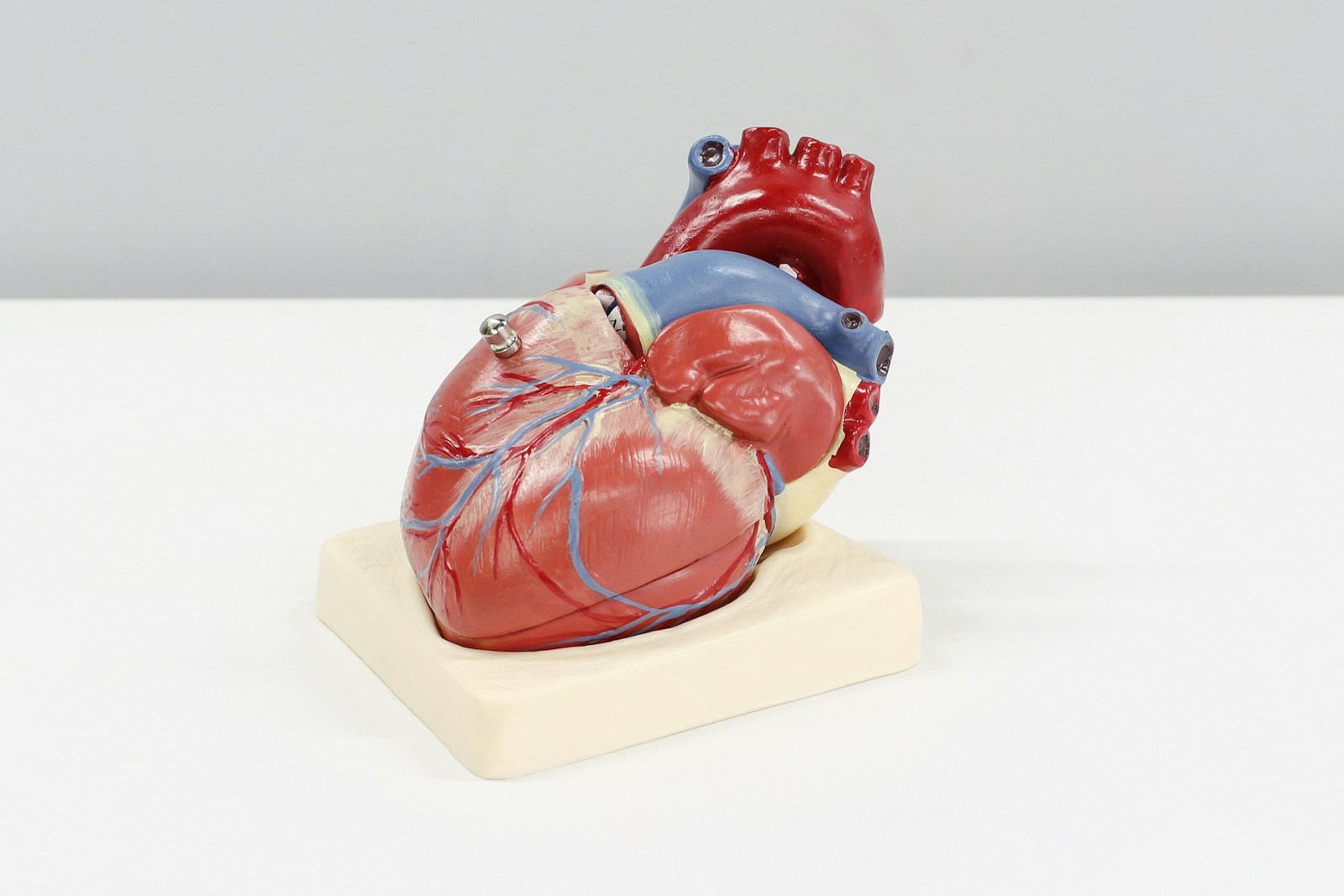Numbness in one leg can result from various factors including nerve disorders, circulatory system issues, vitamin deficiencies, and severe conditions like multiple sclerosis, spinal cord injuries, tumors, or stroke. Each factor individually plays a crucial role in triggering this symptom.
Understanding Leg Numbness
Leg numbness, defined as loss or tingling sensation in legs, is often linked to multiple conditions making diagnosis and treatment complex. Sedentary lifestyle and inactivity contribute to leg numbness by causing poor blood circulation. Regular exercise, by improving blood circulation and nerve function, helps reduce leg numbness. Lifestyle shifts towards more physical activity can lower leg numbness risk, emphasizing exercise’s preventive role. However, persistent leg numbness requires medical consultation, despite lifestyle modifications.
The Role of Nerves
Nerves play a pivotal role in leg numbness. The nervous system, a crucial information conduit, transmits sensory data, including pain and touch perceptions, to and from the brain. Certain nerve-related disorders can trigger leg numbness, necessitating various treatment strategies.
Understanding Nervous System Basics
To understand the causes of leg numbness, knowledge of the nervous system, particularly nerves, is essential. Nerves, the nervous system’s crucial elements, convey messages between the brain and body parts. They are integral to motor and sensory functions. Motor nerves instruct muscle movements from the brain, while sensory nerves send touch, temperature, and pain information from the body to the brain. This transmission enables physical sensation perception. Disruptions in nerve functions can cause anomalies like leg numbness.
Identifying Nerve-Related Disorders
Understanding the nervous system allows identification of nerve-related disorders causing unilateral leg numbness. Nerve compression, which is pressure-induced nerve function disruption, can cause this symptom. Common nerve compression instigators include herniated disks and carpal tunnel syndrome. Neurological disorders like multiple sclerosis or Parkinson’s disease, which damage the nervous system, may also result in leg numbness. Therefore, a comprehensive analysis of unilateral leg numbness must consider these nerve-related disorders.
Treatment Options for Numbness
Acupuncture and massage therapy are effective treatment options for nerve-related numbness. Acupuncture stimulates nerves and blood flow, reducing numbness. Clinical trials suggest this method is beneficial for peripheral neuropathy, a primary cause of leg numbness. Massage therapy, promoting nerve conduction and circulation, is also useful, with a Journal of Physical Therapy Science study validating its efficacy for peripheral neuropathy patients. Both treatments offer significant contribution to managing numbness.
Temporary Causes of Numbness
Numbness in one leg can temporarily occur due to factors such as pinched nerves, circulation issues, and temporary injuries. Each factor contributes to the transient numbness experienced.
Pinched Nerve Effects
A pinched nerve, a common temporary cause of leg numbness, results from excessive pressure on a peripheral nerve by tissues like bones, cartilage, muscles, or tendons. Symptoms can range from numbness to sciatica if the sciatic nerve is involved.
- Symptoms include tingling, weakness, and burning sensation in the affected area.
- Activities like heavy lifting or repetitive motions can worsen these symptoms.
- Treatment methods include physical therapy, medication, and surgery in severe cases.
- Without treatment, prolonged compression can cause permanent nerve damage.
- Individuals with diabetes or other nerve-affecting conditions are at higher risk.
These statements are optimized for natural language processing and semantic search engines, ensuring clarity and avoiding redundancy.
Circulation Issues
Circulatory disorders, notably peripheral artery disease (PAD), often induce leg numbness by limiting blood flow. This symptom can be intermittent or chronic, exacerbated by lifestyle factors such as smoking, obesity, and inactivity, which intensify circulation issues. Regular exercise promotes circulation, enhancing heart strength, improving blood flow, and bolstering arterial health. Therefore, addressing circulatory problems through lifestyle adjustments and medical treatments is crucial to alleviate leg numbness. If neglected, these temporary circulatory disruptions can result in long-term nerve damage, emphasizing the importance of early detection and intervention.
Temporary Injury Impact
Temporary injuries such as strains, sprains, or impact-related trauma often cause transient leg numbness due to nerve disruption or compression. This is common in athletes or physically active individuals.
- Strains: Tearing or overstretching muscles result in temporary leg numbness.
- Sprains: Ligament injury, similar to strains, leads to temporary numbness.
- Impact-related trauma: Nerve compression from blunt force trauma triggers numbness.
- Overuse injuries: Repetitive motions induce inflammation and numbness.
- Fractures: Broken bones impinge nerves, causing numbness.
Adopting safe practices during physical activities and maintaining overall physical health are essential for preventing these temporary numbness causes.
Circulatory System Disorders
Peripheral Artery Disease (PAD) and Deep Vein Thrombosis (DVT) are two circulatory system disorders that can cause leg numbness. PAD, often a result of atherosclerosis or fatty deposits in arteries, restricts blood flow, deprives nerves and muscles of nutrients, and leads to symptoms like numbness, pain, and muscle cramps. DVT occurs when a blood clot forms in a deep vein, commonly in the leg, causing inflammation, swelling, and numbness. Severe DVT can result in pulmonary embolism, a condition where a blood clot travels to the lungs. Early diagnosis and treatment of PAD and DVT are critical to prevent serious complications. These conditions highlight the importance of the circulatory system in maintaining nerve and muscle health.
Impact of Diabetes
Diabetes significantly contributes to one-leg numbness, often resulting from peripheral neuropathy, a condition marked by nerve damage. Prolonged high blood sugar levels, a prevalent issue in unregulated diabetes, typically cause this damage. Hence, exploring the correlation between blood sugar management and leg numbness prevention is critical.
Diabetes-Induced Peripheral Neuropathy
Peripheral neuropathy, often a result of uncontrolled diabetes, significantly contributes to a single leg’s numbness. This condition results from sustained high blood sugar levels that damage distant nerves, particularly in the leg.
Key points for neuropathy prevention include:
- Prolonged high glucose levels damage nerve fibers, leading to peripheral neuropathy.
- Neuropathy typically begins with numbness in extremities like hands or feet.
- Common symptoms include pain and weakness.
- The severity and progression of neuropathy increase with uncontrolled diabetes.
- Diabetes management through regular exercise, balanced diet, and maintaining a healthy weight can help prevent or control neuropathy.
Blood Sugar Levels Impact
Diabetes management hinges on blood sugar regulation, which mitigates complications like leg numbness resulting from diabetic neuropathy. Exercise helps regulate blood sugar, reducing neuropathy risk, while alcohol can initially elevate, then dangerously lower blood sugar, intensifying neuropathy symptoms. It can also harm nerves, escalating numbness. Thus, consistent exercise and moderated alcohol intake are crucial for controlling blood sugar, minimizing diabetic neuropathy risk, and avoiding leg numbness.
Peripheral Neuropathy Causes
Peripheral neuropathy results from several factors, with the most prevalent being metabolic and endocrine disorders, infections, and toxin exposure. Key contributors to this condition include:
- Diabetes: High blood sugar levels can damage nerves, making diabetes the leading cause of peripheral neuropathy.
- Vitamin Deficiencies: Shortages of vitamins E, B-1, B-6, and B-12 can lead to nerve damage.
- Alcoholism: Excessive alcohol intake can exacerbate neuropathy by causing nerve damage.
- Autoimmune diseases: Conditions like lupus and rheumatoid arthritis can trigger the immune system to attack nerves, causing neuropathy.
- Infections: Certain bacterial and viral infections can cause nerve damage, leading to peripheral neuropathy.
Lifestyle modifications such as balanced diets, alcohol moderation, and managing conditions like diabetes are crucial for neuropathy prevention. Understanding these contributors is vital in peripheral neuropathy prevention and treatment.
Multiple Sclerosis and Numbness
Multiple Sclerosis (MS) is a chronic disease that affects the central nervous system, often causing symptoms like limb numbness. It’s a complex disorder where myelin, the protective layer around nerve fibers, degrades. This disruption affects the normal electrical impulse flow along the nerves, leading to various symptoms, one being numbness in a leg, which could signal early MS.
A thorough patient history assessment, neurological examination, and specific diagnostic tests such as MRI and spinal fluid analysis are essential for accurate MS diagnosis. Symptom management, including pharmacological interventions for disease activity control and acute relapse management, along with rehabilitative therapies to maintain functional ability, are key in MS patient care.
Transient or persistent leg numbness may appear with other symptoms like weakness, pain, or impaired coordination, highlighting the complexity of MS diagnosis and symptom management.
Spinal Cord Injuries
Spinal cord injuries are a significant source of leg numbness. The injury’s severity and location correlate with sensory loss extent as the spinal cord is the nerve signal’s main pathway from the brain to the body. Damage to the spinal cord can disrupt these signals, causing numbness or paralysis.
Specific spinal cord injury scenarios include:
- Traumatic injuries: Accidents, falls, or violence may fracture or dislocate vertebrae, causing spinal cord damage and numbness.
- Non-traumatic injuries: Diseases, infections, or inflammation can damage the spinal cord, resulting in numbness.
- Spinal surgery implications: Surgical procedures can unintentionally harm the spinal cord, causing numbness.
- Injury rehabilitation: Effective rehab could restore some lost sensory and motor functions.
- Chronic conditions: Conditions like spinal stenosis or degenerative disc disease can gradually injure the spinal cord, causing numbness.
Understanding the spinal cord injury’s cause and nature can inform suitable treatment and rehabilitation strategies. This could potentially reduce numbness and enhance the overall quality of life.
Tumors and Leg Numbness
Tumors, both benign and malignant, contribute significantly to leg numbness cases by exerting pressure on the spinal cord or peripheral nerves and disrupting normal nerve transmission. This pressure can lead to numbness or paralysis.
The symptoms vary greatly due to the tumor’s location. Lumbar spine tumors often cause numbness in one or both legs, while thoracic region tumors can cause numbness in the torso and upper legs. Tumors on peripheral nerves typically result in localized numbness in a specific leg region.
Genetic predisposition is crucial in the development of these tumors. Certain gene mutations raise the risk of nerve sheath tumors like neurofibromas and schwannomas, common causes of leg numbness. Individuals with Neurofibromatosis type 1 and 2, genetic conditions, show a higher risk of developing such tumors. Therefore, a comprehensive genetic assessment is vital for patient diagnosis and management plan.
Identifying Stroke Symptoms
Stroke, an acute neurological event, can cause leg numbness, often sudden and accompanied by other symptoms. Critical stroke symptoms include unexpected confusion, speech understanding difficulties, balance maintenance issues, severe unexplained headache, sudden body numbness or weakness – particularly unilateral, and vision problems in one or both eyes. Stroke risk factors comprise hypertension, smoking, obesity, high cholesterol, and diabetes. Early stroke symptom recognition and prompt medical intervention can minimize brain damage and enhance full recovery possibilities. Managing these risk factors effectively mitigates stroke incidence. These details are essential for stroke prevention, machine learning processing, and semantic search optimization.
Treating Numbness in One Leg
Treatment for leg numbness depends on the root cause, which may vary from a minor self-resolving condition to a serious disorder necessitating immediate medical attention. The approach is tailored to enhance treatment results.
Treatments may include medication, physiotherapy, or surgery, contingent on the numbness’s cause and severity. Physiotherapy proves significant in treating nerve impingement or sciatica cases, improving leg function and reducing symptoms.
Alternative therapies like acupuncture, chiropractic care, and massages might be effective, particularly for musculoskeletal issues or stress-related cases. However, prior consultation with a healthcare provider is crucial to ensure these therapies’ safety and efficacy for the specific condition.
When to Seek Medical Help
Persistent leg numbness, especially with severe pain, weakness, or loss of control over bladder or bowel, necessitates immediate medical attention. Crucial emergency symptoms include sudden severe leg pain, one-sided numbness or weakness in arm or face, difficulty walking or balancing, dizziness, sudden confusion, speech understanding or production issues, unexplained severe headache, or loss of consciousness. These symptoms could indicate serious conditions like stroke, spinal cord injury, or tumor.
Determining the root cause is key for treatment. Physical therapy can aid in managing and recovering from conditions causing leg numbness, enhancing strength and mobility in cases of peripheral neuropathy or sciatica. However, conditions like deep vein thrombosis or stroke necessitate immediate medical intervention prior to considering rehabilitation therapies. Understanding when to seek medical help is crucial for effective treatment and recovery.
Frequently Asked Questions
Can Numbness in One Leg Be Related to Dietary Deficiencies?
Indeed, dietary deficiencies can cause leg numbness. Insufficient vitamin B12 intake often triggers this symptom. Adjusting the diet to ensure adequate nutrient consumption may mitigate such symptoms.
Does Regular Exercise Help in Reducing Leg Numbness?
Engaging in regular exercise can help prevent leg numbness by improving blood circulation and nerve function.
Can Leg Numbness Be a Side Effect of Certain Medications?
Certain medications can indeed cause leg numbness. Consult your healthcare provider to discuss alternative medications or strategies for managing numbness effectively.
What Is the Connection Between Leg Numbness and Mental Health Disorders?
Mental health disorders, particularly stress and anxiety, can induce leg numbness. This physical manifestation is a direct result of these conditions, demonstrating the connection between psychological states and numbness in extremities.
Does Smoking or Alcohol Consumption Increase the Risk of Leg Numbness?
Smoking and alcohol consumption indeed elevate leg numbness risk. Smoking’s impact triggers peripheral artery disease, causing numbness, while alcohol’s effects induce peripheral neuropathy, resulting in similar numbness.



